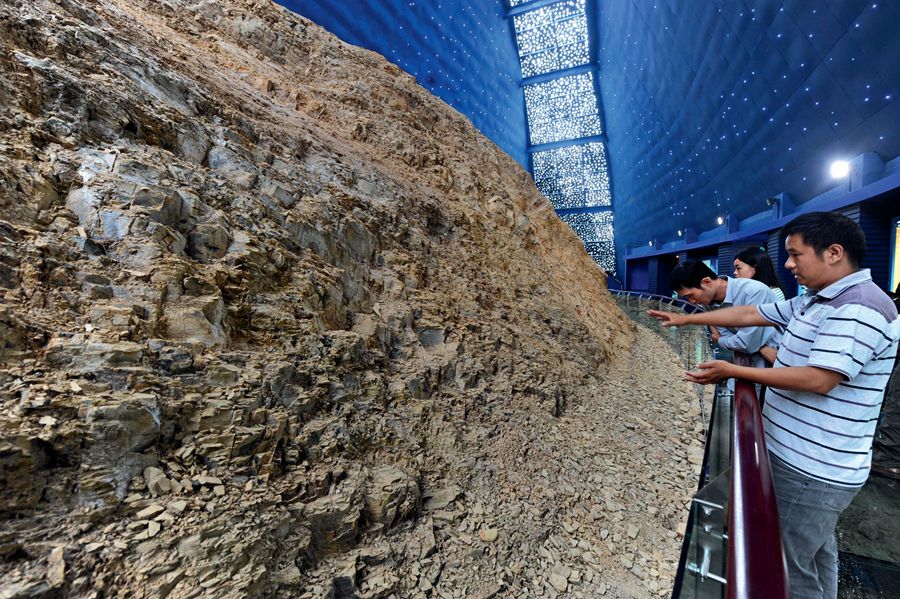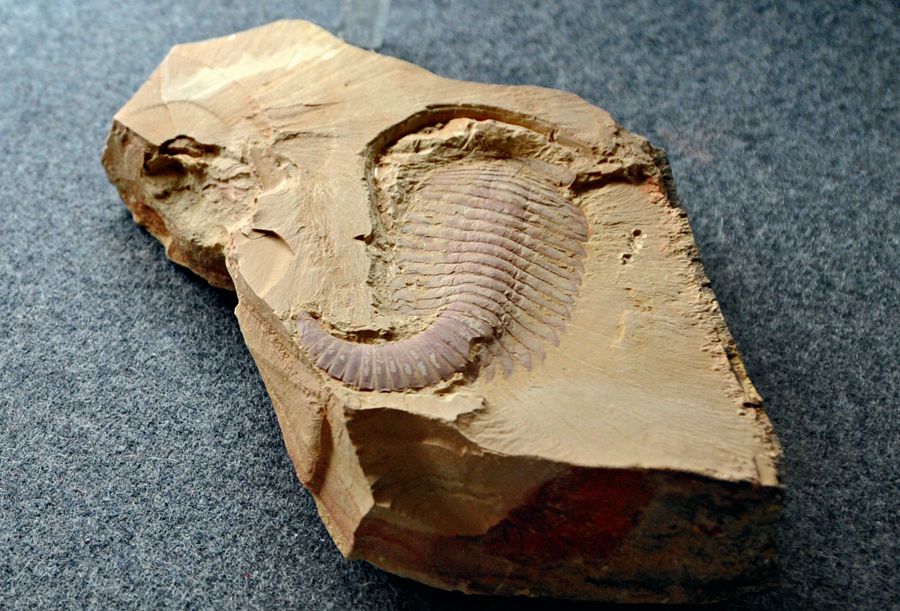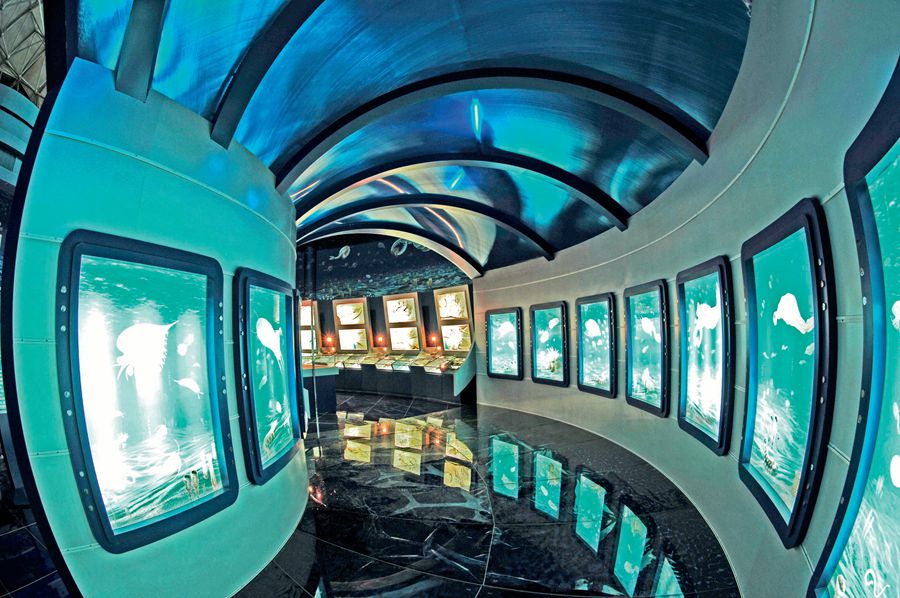MAOTIAN is a cap-shaped mountain 52 km southeast of Kunming, the capital of Yunnan Province. It came to public attention in the 1980s after a big trove of fossils dating back 530 million years was discovered there. This was called one of the biggest scientific discoveries of the 20th century. As Maotian is located in Chengjiang County, the fossil site is named after the county.
These fossils scattered across an area 20 km long and 4.5 km wide along the Maotian Mountain, and were buried 50 meters or more below the surface. They are the remains of a great variety of ancient marine creatures, including poriferans, vertebrates, and others already known to be extinct. Invaluable evidence of the evolution of early life on earth, they hold the key to understanding the Cambrian explosion. In 2012, the World Heritage Committee admitted the Chengjiang Fossil Site into the world heritage list.
The Origin of Humankind
The question of where humans come from has been asked for millennia, and the answer is still uncertain. For instance, the mythical Cambrian explosion greatly puzzled Darwin and later evolutionists.

A scientific worker shows visitors the location of the first discovery of fossils in the Maotian Mountain.
Life did not appear on the earth (now 4.6 billion years old) until about 3.2 billion years ago, when single-cell fungi and algae emerged in the sea. But in the early Cambrian period (542 million to 485 million years ago) the diversity of life underwent explosive growth: over 20 million years, a good number of species comparable with those of today had emerged on the earth. In other words, more than 90 percent of phyla of animals were formed over only one percent of the earth’s history. This is what is known as the Cambrian explosion.
How could forms of life make appearances in such an abrupt, explosive way? To answer this question, scientists worldwide have been looking for physical evidence for their research.
In the summer of 1984 Hou Xianguang, a fresh postgraduate who had just joined the Nanjing Institute of Geology and Paleontology under the Chinese Academy of Sciences, came to the Maotian Mountain to search for Cambrian fossils. He found nothing during the first week. But on July 1, his luck changed. A chip on a rock exposed a coin-sized fossil, which Hou knew at first sight belonged to an invertebrate of the early Cambrian period. This finding led to the discovery of the Chengjiang Fossil Site. Over the following 20 years, Chinese and international paleontologists have conducted extensive excavations on the mountain. Their research, based on their findings, sent repercussions around the world.

A fossil of Fuxianhuia protensa Hou.
The tens of thousands of fossils found in Cheng- jiang exposed scientists to a vibrant animal world dating back 530 million years, whose members, ranging from sponges to chordates, cover all phyla of modern animals. Among them are also the species that appeared in abundance in their times but are now extinct. In addition to the high density, the Chengjiang fossils are also the best preserved and most widely diverse among all Cambrian remains. They are the best and direct evidence of the origin and evolution of major phyla.
The Geological Park
On the site where Prof. Hou found the first fossil on Maotian Mountain now stands a fossil museum, which also resembles a cap. It displays an array of life-size replicas of ancient sea creatures. A highlight of the museum is a four-dimensional show of more than 200 ancient creatures recreated according to their fossils, in the activities of hunting for food, roaming, interacting with each other, and struggling under stress. The show takes visitors back in time to prehistoric periods to see the topography of the young earth and its early residents.
What’s rare about the Chengjiang fossils is that they include both the hard and soft parts of vertebrates and well-preserved remains of various soft-body animals. Among them are Yunnanozoon, the oldest known chordate, and the world’s earliest vertebrates Myllokunmingia and Haikouichthys. Their discovery extends the history of vertebrates by 50 million years and corroborates the process of the evolution from invertebrates to vertebrates, a significant development in Darwinism. As the forefather of all vertebrates including humankind, these ancient species of fish now appear in textbooks, dictionaries, encyclopedias, and museums worldwide, representing milestone moments in the history of evolvement on earth.

The Maotian Mountain Fossil Musuem.
Some foreign media claimed that without Yunnanozoon, the development of the nerve system in animals would have been impossible. The result would have been an earth as dull and barren as the moon. It is no exaggeration that the Maotian Mountain is the cradle of lives on this planet, and stores the dossiers of its hoary past, which need to be explored by scientists for many generations.
To better protect the fossil site, the county government has closed the various phosphate mines in the region, a pillar of the local economy. In 2001 the Maotian Mountain National Geopark was established. The park includes an 18-sq-km Cambrian fossil reserve in which an area of 1.2 sq km is designated for preservation of fossils and scientific research activities, and is not open to the public. In the park is also a 42,000-sq-m fossil museum, which is scheduled to open this October.
Lakes on the Plateau
The Maotian Mountain sits on the Yunnan-Guizhou Plateau, which was an ocean about 200 million years ago. Crustal movements later raised the region, creating a multitude of lakes across it in the process. One of them is the Fuxian Lake 10 km southeast of the mountain.
With a surface of 212 sq. km and a depth of 155 meters, Fuxian is the second deepest lake in China. During the Ming Dynasty (1368-1644), the travel writer and geographer Xu Xiake (1587-1641) wrote in his travelogue: “Most mountains in Yunnan are earthen ones.” The soil on them is flushed into nearby lakes, muddying the water. The only lake with clear water is Fuxian. With the crystal water and surrounding peaks of unique shapes, the lake has been the subject of many poems in history.
The attractions of Fuxian include hot springs on the eastern shore, high-end hotels on the northern shore, Luchong Village on the western shore, and the Gushan scenic area on the southern shore.
A 4A tourist resort, Luchong Village, lies between mountains and the Fuxian Lake. Visitors can watch the sunrise on the Bijia Mountain at dawn, and try their hand at “waterwheel fishing” at the foot of the mountain at dusk. During the daytime, they can take a boat tour of the lake, or go diving.
“Waterwheel fishing” is a time-honored way of fishing in the region. The Fuxian Lake abounds with a native fish that is locally called “wave-brave” (Anabarilius sgrahami). To catch it, local residents dig canals between the lake and caves on the bank where the fish visit to lay eggs every year. With waterwheels they stir the water in the canals, creating waves to entice the fish. When the fish swims against the waves, as is their nature, they will end up in the bamboo-woven traps set up by the fisherman. The fish can be made into different dishes, and tastes best when fried or grilled.


